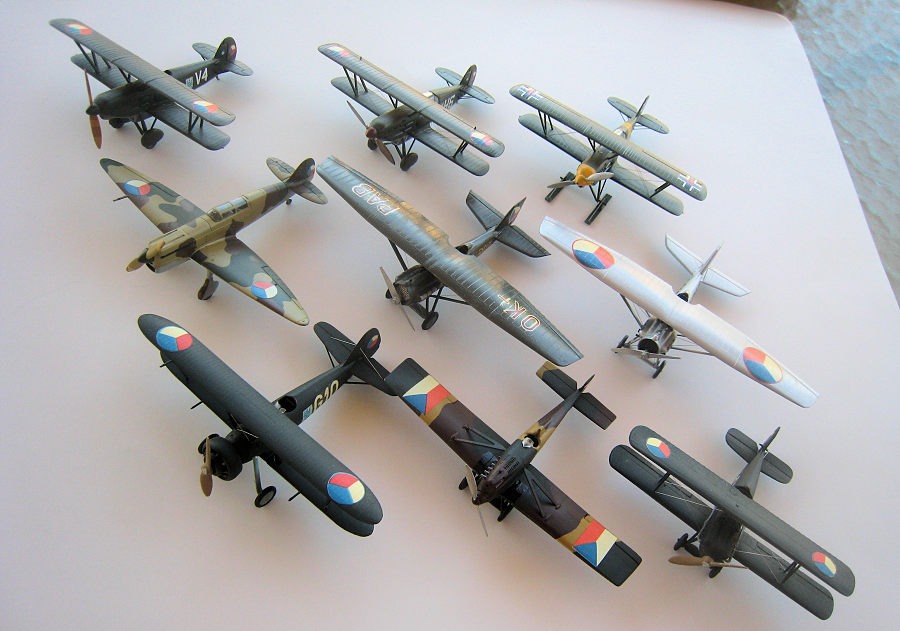
Czechmates

| HISTORY |
CZECHOSLOVAKIAN FIGHTERS OF THE MID-WAR PERIOD.
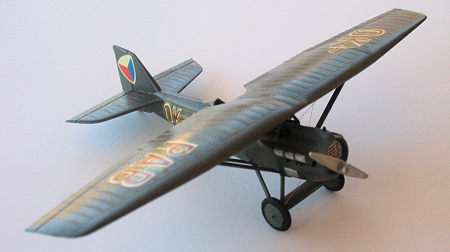 I have
always felt that a display of model airplanes should be basically
educational in concept, illustrating the technological development of
aircraft during a particular time period. In this case, I have found that
while Czechoslovakia, now known as the Czech Republic, has had a
particularly interesting history of fighter development, beginning in the
early twenties to replace the Spads and other planes of World War I vintage.
Their aircraft industry was mainly concentrated around Prague, and the
political conditions the Czech people faced were most unusual, eventually
ending with the Nazi-German takeover at the beginning of World War II, and
later with the Communist Soviet Union taking over at the end of the war,
resulting in most Czech aviation being dominated by the Russians.
I have
always felt that a display of model airplanes should be basically
educational in concept, illustrating the technological development of
aircraft during a particular time period. In this case, I have found that
while Czechoslovakia, now known as the Czech Republic, has had a
particularly interesting history of fighter development, beginning in the
early twenties to replace the Spads and other planes of World War I vintage.
Their aircraft industry was mainly concentrated around Prague, and the
political conditions the Czech people faced were most unusual, eventually
ending with the Nazi-German takeover at the beginning of World War II, and
later with the Communist Soviet Union taking over at the end of the war,
resulting in most Czech aviation being dominated by the Russians.
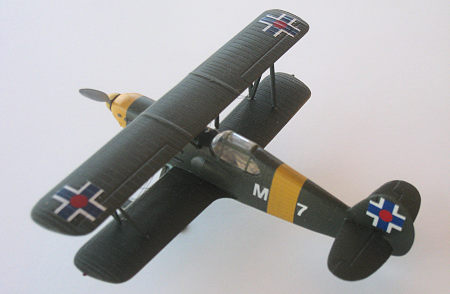 There
were three major producers of aircraft during this period, Avia, Letov, and
Skoda, and they produced some interesting fighter types, in addition to
other military and civilian types. I have several histories of Czech
aviation, unfortunately all written in the Czech language, but Czech
fighters are covered in a number of English-language publications, and most
of the kits produced in Czechoslovakia have English language coverage of the
history and development of the types. Even the Czech language texts,
however, have very useful photos and accurate three view drawings.
There
were three major producers of aircraft during this period, Avia, Letov, and
Skoda, and they produced some interesting fighter types, in addition to
other military and civilian types. I have several histories of Czech
aviation, unfortunately all written in the Czech language, but Czech
fighters are covered in a number of English-language publications, and most
of the kits produced in Czechoslovakia have English language coverage of the
history and development of the types. Even the Czech language texts,
however, have very useful photos and accurate three view drawings.
| THE KITS |
Over the years, I have acquired a number of kits of
Czech origin, all produced by ďKPĒ, otherwise known as Kovozavody Prostejov.
These are, of course, in the only true scale, 1/72. They produced a number of
excellent kits in that scale of Czech aircraft, and also some Russian types that
they used after World War II. Hopefully, they will continue to manufacture these
kits if the 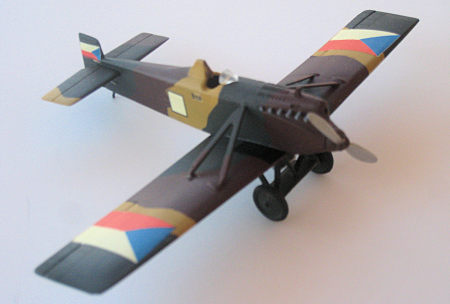 Russians
donít invade their country and destroy their tooling.
Russians
donít invade their country and destroy their tooling.
The kits of Czech fighters that belong in the midwar period include the Avia B.21 biplane, the Avia BH-3 monoplane, the Letov S.23-1 biplane, the Skoda D.1 parasol wing monoplane, the Avia B.534 biplane of the late thirties, and the Avia B.35.1 monoplane, which was just being developed when the war started.
In general, these are all excellent kits, basically accurate in outline, with generally accurate decals. One feature of the series is that each kit includes a very useful set of instructions in Czech, English, and German. Sprue diagrams are included, exploded assembly drawings are provided, and line drawings illustrate the paint schemes and marking details. In addition, most of the kits come in boxes with color views, and these are especially useful when selecting color schemes for the models. Most of the kits I have were obtained many years ago, and the instructions list the origins of the kits as being produced in Czechoslovakia rather than the Czech Republic. Prices ranged from just a few dollars, but today, they are probably higher, and I donít know if these kits are still being manufactured.
The KP kits I have built include the following:
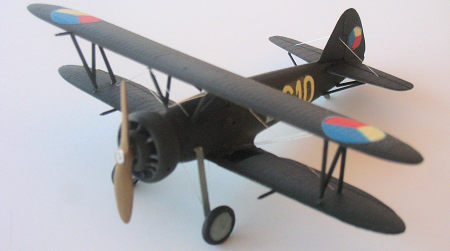 #17 Avia
B.21. This biplane fighter was designed by Benes and Hajn, appeared in the early
twenties after extended development. There were 139 built, and they entered
service in 1925. They were of all wooden construction, and were powered by
Hispano Suiza liquid cooled engines, A total of 39 were built for the Belgian
Army. Decals are provided for four aircraft, all Czech Air Force.
#17 Avia
B.21. This biplane fighter was designed by Benes and Hajn, appeared in the early
twenties after extended development. There were 139 built, and they entered
service in 1925. They were of all wooden construction, and were powered by
Hispano Suiza liquid cooled engines, A total of 39 were built for the Belgian
Army. Decals are provided for four aircraft, all Czech Air Force.
##22 Avia BH-3. This monoplane fighter was far in advance of its time when the first prototype appeared in 1921 after some experimental monoplanes seemed to have development potential. The early prototypes were not particularly successful, and although a few were placed in squadron service in 1923, and they were replaced by biplanes within a couple of years because of peculiar flying characteristics and a tendency to spin without warning. The kit is nicely done in white plastic, and decals for one prototype and one service example are provided.
 #23 Letov
S-231 Biplane Fighter. The kit is listed as having first appeared in 1985, and
the actual aircraft first appeared in 1933. Production soon followed, although
they only remained in service for several years before they were dismantled and
shipped to the Spanish Republicans for use in the Spanish Civil War. They lasted
until 1939, when they were destroyed at the end of that war. Decals are provided
for one Czech S.231 and one type in Spanish Republican markings. This is a very
nice kit, although a three view drawing I have shows both wings having identical
chords, the kitís upper wing is decidedly narrower than the bottom wings. The
assembly instructions and box art are particularly useful.
#23 Letov
S-231 Biplane Fighter. The kit is listed as having first appeared in 1985, and
the actual aircraft first appeared in 1933. Production soon followed, although
they only remained in service for several years before they were dismantled and
shipped to the Spanish Republicans for use in the Spanish Civil War. They lasted
until 1939, when they were destroyed at the end of that war. Decals are provided
for one Czech S.231 and one type in Spanish Republican markings. This is a very
nice kit, although a three view drawing I have shows both wings having identical
chords, the kitís upper wing is decidedly narrower than the bottom wings. The
assembly instructions and box art are particularly useful.
#29 Skoda D.1. In 1925, the Skoda firm was created to develop all metal aircraft, and the firm obtained a license to produce the French Dewoitine D-21C, a parasol wing fighter of all metal construction. A total of 25 of these planes was produced for the Czech Air Force, and they served until 1939. They were also used by the Czech government, and flown with civil registrations. The kit depicts the Czech D.1 fighter, but is probably close enough to be converted to a French Dewoitine by a serious modeler. A gain, kit instructions are very complete, and decals are provided for military and civilian marked versions. This is an excellent kit.
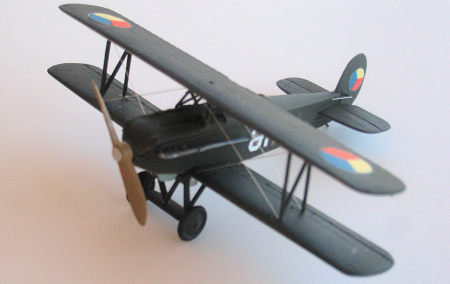 #2 Avia
B.534 Biplane Fighter. This fighter, developed in the middle thirties, was
developed during its service life, with four major versions produced, with the
engine power increased with an 850 ho. Hispano Suiza, and the open cockpit of
the earlier models being replaced with an enclosed canopy. Some B.534ís carried
20 mm. cannon, but most had machine gun armament. At the beginning of the war,
after the German takeover, B.534ís were passed on to the Slovak Air Force, and
they were sent to the Russian front in 1941, where they were used briefly. The
KP kit depicts the B.534 version with the enclosed cockpit, but a conversion to
the open cockpit is relatively easy. Many variations can be made from this kit,
and again, this is an excellent kit.
#2 Avia
B.534 Biplane Fighter. This fighter, developed in the middle thirties, was
developed during its service life, with four major versions produced, with the
engine power increased with an 850 ho. Hispano Suiza, and the open cockpit of
the earlier models being replaced with an enclosed canopy. Some B.534ís carried
20 mm. cannon, but most had machine gun armament. At the beginning of the war,
after the German takeover, B.534ís were passed on to the Slovak Air Force, and
they were sent to the Russian front in 1941, where they were used briefly. The
KP kit depicts the B.534 version with the enclosed cockpit, but a conversion to
the open cockpit is relatively easy. Many variations can be made from this kit,
and again, this is an excellent kit.
#8. Avia AV-135. Development of Aviaís most advanced fighter began in 1938, and continued after the German takeover. Only the prototype flew in Czech markings, while 12 AV-135ís were purchased by the Bulgarians. Others were flown in German markings. Development ended in the early forties. T he kit, again, is a good one, and can be built in a number of color schemes.
| CONCLUSIONS |
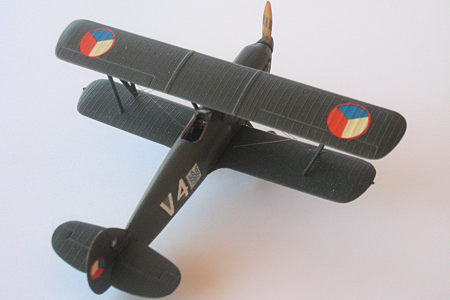 One of the
nice things about building models in 1/72 scale is that there are so many models
that can be built from the kits available. When you get tired of Spitfires,
Mustangs, Messerschmitts and Focke Wulfs, it is refreshing to be able to build
models of some of the more obscure types used in Europe and other places. The
Czechs built some excellent aircraft, and they have certainly produced some very
nice kits which are available at fairly low prices. Try some of these, as they
are a lot of fun, and easy to build. I would certainly recommend them.
One of the
nice things about building models in 1/72 scale is that there are so many models
that can be built from the kits available. When you get tired of Spitfires,
Mustangs, Messerschmitts and Focke Wulfs, it is refreshing to be able to build
models of some of the more obscure types used in Europe and other places. The
Czechs built some excellent aircraft, and they have certainly produced some very
nice kits which are available at fairly low prices. Try some of these, as they
are a lot of fun, and easy to build. I would certainly recommend them.
Brian Baker
20 April 2023 Copyright ModelingMadness.com. All rights reserved. No
reproduction in part or in whole without express permission from the editor.
If you would like your product reviewed fairly and fairly quickly, please contact the editor or see other details in the
Note to
Contributors.